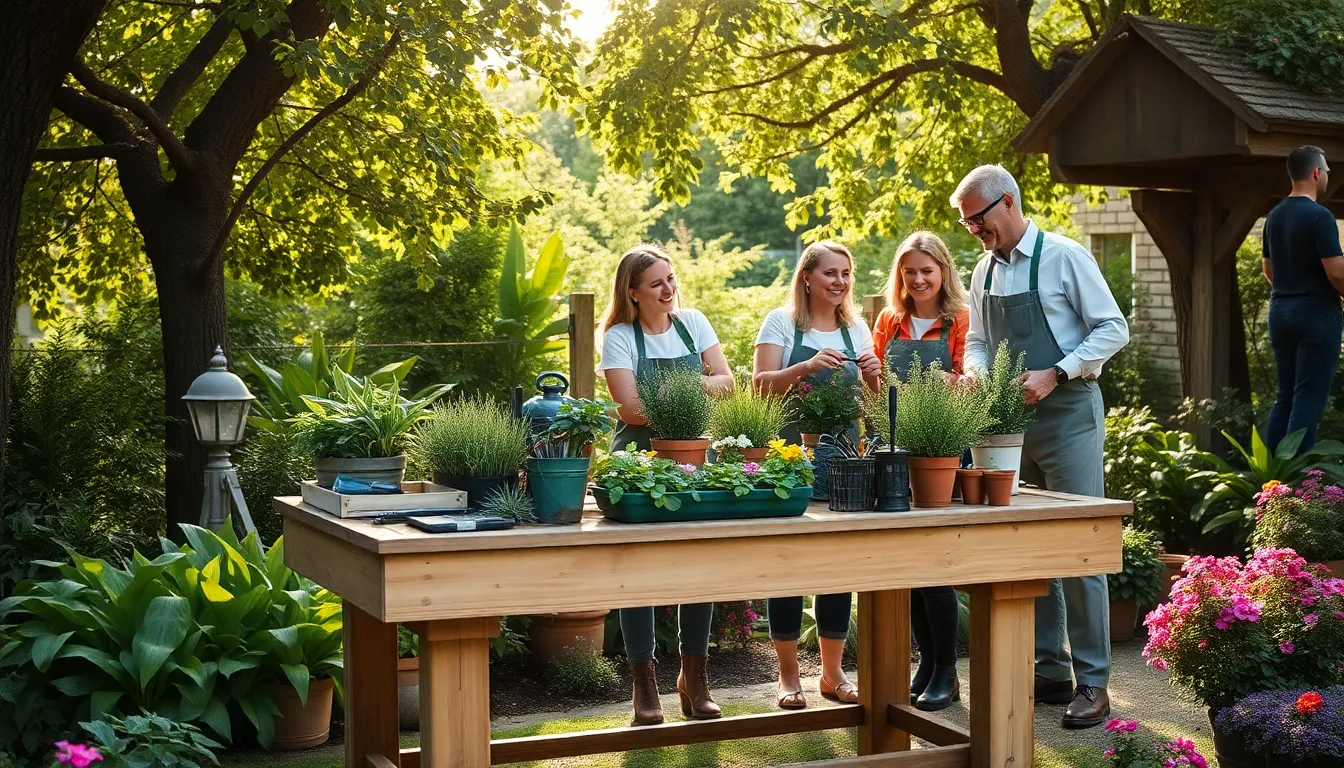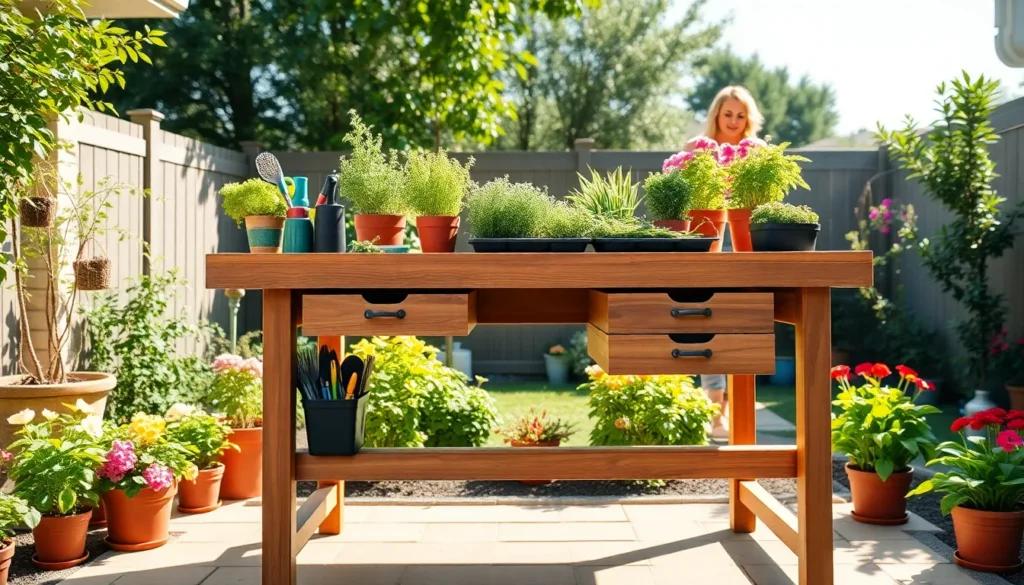Imagine stepping into your backyard oasis, where your gardening tools await on a beautifully organized table, sunlight dapples the leaves, and the aroma of fresh soil wafts through the air. A gardening table outdoor isn’t just a piece of furniture: it’s an essential companion for both seasoned horticulturists and backyard newbies alike. If you’re ready to elevate your gardening game while keeping your back steady and your knees clean, continue reading. This guide will cover everything from benefits to maintenance tips, all served up with a side of wit and wisdom.
Gardening Table Outdoor

Using a gardening table has its perks. First and foremost, they keep everything organized. Imagine not having to dig through a cluttered shed or hunt for that elusive trowel again. This convenience alone can turn a chore into a delight, encouraging more hands-on gardening.
Also, they elevate your planting game. No one enjoys bending over for extended periods, right? A gardening table relieves back pain and strain, allowing for more productivity and less discomfort. Plus, by having your plants at a proper height, you get a better view of your blooming beauties.
A gardening table also provides a dedicated space for potting, pruning, and organizing tools. It’s like your professional workspace in the great outdoors, enhancing both efficiency and enjoyment. Also, they can double as a decorative element in your garden. Picture a rustic, wooden gardening table flanked by flourishing plants, it’s a feast for the eyes. And let’s not forget, they make a perfect base for your garden parties. Who doesn’t want to impress guests with a chic outdoor setup finally?
Types of Gardening Tables
When it comes to gardening tables, variety is the spice of life. There are several types to choose from, depending on your needs and available space.
For those with ample garden space, a large potting table may fit the bill. These tables come equipped with spacious tops and shelves, giving you plenty of room to handle all your gardening tasks. They provide efficient layout options, allowing you to organize everything neatly.
On the other end, if space is limited, consider a compact folding table. These handy options are easy to store away and perfect for small balconies or patios. They offer convenience without sacrificing functionality, making gardening accessible for everyone.
Finally, for the tech-savvy gardener, elevated gardening tables with built-in irrigation systems and tool storage can be a game changer. These tables blend innovation and practicality, making gardening easier than ever.
Materials for Gardening Tables
The material you choose for your gardening table can significantly impact durability and maintenance. Here are some popular choices:
- Wood: A classic choice. Wooden tables provide a rustic charm that enhances any garden scene. Hardwoods like teak or cedar offer durability and resistance to rot, ensuring longevity. But, wood requires some maintenance like regular sealing to prevent weather damage.
- Metal: Galvanized steel or aluminum tables are incredibly durable and resistant to rust. They offer a sleek, modern look and are generally easier to clean compared to wood. If you’re keen on keeping things low maintenance, metal might just be your best friend.
- Plastic: Lightweight and often less expensive, plastic tables are weather-resistant and easy to move. But, they may not offer the same aesthetic appeal as wood or metal options. But for practicality, they get the job done without trouble.
Choosing the Right Location
Location is key when setting up an outdoor gardening table. Consider the amount of sunlight your garden receives. Most plants thrive in full sun, so position your table accordingly. A spot that gets morning sun and afternoon shade can provide a comfortable working environment without overheating.
Next, assess access to water. Having a nearby water source will make your life much easier for watering plants or cleaning tools. Nobody wants to haul a watering can across the yard every time they need a sip for their plants.
Finally, think about proximity to your main garden area. Keeping your table close to where you do most of your planting will save time and energy. After all, gardening should feel fulfilling, not like a marathon.
Essential Features to Consider
Choosing the right gardening table involves considering various essential features. Height is a crucial factor: look for a table that allows comfortable working posture. You want it high enough to avoid back strain yet low enough to reach your plants easily.
Another important feature is storage. Tables with shelves or drawers can help you keep tools organized and accessible. Also, consider a table with a built-in sink or pots for soil and water. These features make gardening tasks much simpler.
Finally, don’t overlook the aesthetics. A well-designed table can enhance your garden’s overall look, making it not just functional but beautiful too.
Maintenance Tips for Your Gardening Table
Once you’ve found the perfect gardening table, maintaining it is key to ensuring longevity. For wooden tables, regular sealing or staining is necessary to keep them resistant to the elements. Also, keep an eye out for any signs of rot or insect damage.
Metal tables might require occasional rust treatment. A simple wipe-down with a mild cleanser can keep them looking sharp and shiny.
For plastic tables, a quick rinse with water and soap can clear away dirt and grime. Remember to check for cracks or fading that may signal it’s time for a replacement.
Finally, store your table indoors or cover it during harsh weather conditions to extend its life.
